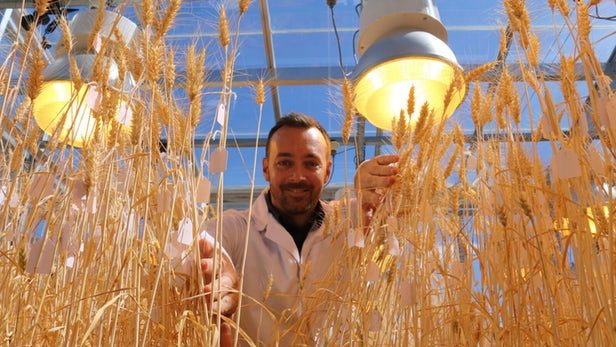
Breaking News
 Is Yen Carry Trade's unwind about to trigger a repo market meltdown? Let's dive into the mec
Is Yen Carry Trade's unwind about to trigger a repo market meltdown? Let's dive into the mec
 Chairman Rand Paul Releases New Report Revealing Hundreds of Billions...
Chairman Rand Paul Releases New Report Revealing Hundreds of Billions...
 Get Schiffty Music Video | Rick and Morty | Adult Swim
Get Schiffty Music Video | Rick and Morty | Adult Swim
Top Tech News
 This tiny dev board is packed with features for ambitious makers
This tiny dev board is packed with features for ambitious makers
 Scientists Discover Gel to Regrow Tooth Enamel
Scientists Discover Gel to Regrow Tooth Enamel
 Vitamin C and Dandelion Root Killing Cancer Cells -- as Former CDC Director Calls for COVID-19...
Vitamin C and Dandelion Root Killing Cancer Cells -- as Former CDC Director Calls for COVID-19...
 Galactic Brain: US firm plans space-based data centers, power grid to challenge China
Galactic Brain: US firm plans space-based data centers, power grid to challenge China
 A microbial cleanup for glyphosate just earned a patent. Here's why that matters
A microbial cleanup for glyphosate just earned a patent. Here's why that matters
 Japan Breaks Internet Speed Record with 5 Million Times Faster Data Transfer
Japan Breaks Internet Speed Record with 5 Million Times Faster Data Transfer
 Advanced Propulsion Resources Part 1 of 2
Advanced Propulsion Resources Part 1 of 2
 PulsarFusion a forward-thinking UK aerospace company, is pushing the boundaries of space travel...
PulsarFusion a forward-thinking UK aerospace company, is pushing the boundaries of space travel...
 Dinky little laser box throws big-screen entertainment from inches away
Dinky little laser box throws big-screen entertainment from inches away
 'World's first' sodium-ion flashlight shines bright even at -40 ºF
'World's first' sodium-ion flashlight shines bright even at -40 ºF
NASA-inspired "speed breeding" boosts wheat production threefold

Our planet is expected to host an extra two billion people by 2050, but the amount of arable land we've got to work with won't be changing all that much. How exactly we're going to feed all these hungry mouths is a problem scientists are looking at from every angle, including creating heat-resistant cows, vertical farms and lab-grown hamburgers. Researchers are now reporting an advance in a NASA-inspired field known as "speed breeding" that relies on intense lighting regimes to raise crops several times faster, and boost their health at the same time.




Developed by scientists at the University of Sydney, the University of Queensland (UQ) and the John Innes Centre, the technique builds on research trialled by NASA more than a decade ago as a way of producing food during space missions. It sees the crops raised here on Earth inside a glasshouse, under continuous low-cost LEDs that emit light at specific wavelengths to boost photosynthesis.
"The far-red spectrum is important for triggering the reproductive growth and also light intensity for healthy robust plants," study co-author and UQ Senior Research Fellow Lee Hickey tells New Atlas.

Using its carefully crafted lighting setup, the team was able to grow six generations of wheat, chickpea and barley plants and four of canola plants in a single year, as opposed to two or three in the glasshouse or a single generation in the field. It says it also works for peanuts, amaranth and lentils, and expects it to work for sunflower, pepper and radish.
"In the glasshouse we currently use high pressure sodium vapor lamps and these are quite expensive in terms of the electricity demand," says Hickey. "In our paper we demonstrate that wheat and barley populations can be grown at a density of about 900 plants per square meter, thus in combination with LED light systems, this presents an exciting opportunity to scale up the operation for industry use."
Hickey says the speed breeding technique has the potential to not only boost yields for farmers, but lead to crops of better quality. The team compared plant features such as the amount of tillers and grains per spike to those grown under regular greenhouse conditions, finding that often the speed bred plants came out on top. Raising plants this fast has been possible before, but producing healthy specimens that compare to the real deal hasn't been so easy.



